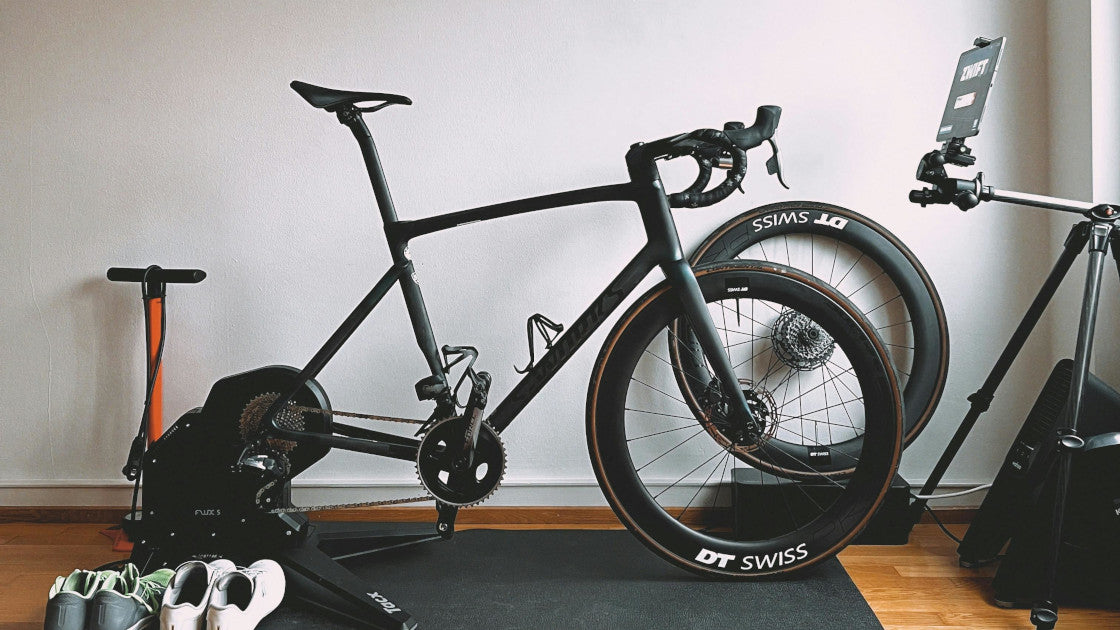Indoor cycling has grown into a highly competitive, elite sport. As with any elite sport, nutrition is crucial for success. However, as a lot of the road cyclists who switch to eRacing soon realize, nutrition for indoor cycling is not the same as for outdoor events.
Here, we will break down the key nutritional strategies for indoor cycling, including hydration, fueling, recovery, and performance aids.
1. Pre-Race Fueling Is Critical
Elite indoor cycling races typically last 1 to 2 hours, and are characterized by sustained high intensity. We’re talking intensity factors of over 90 for an hour, so it’s common to be very close to your limit for a whole hour.
At these intensities, your body relies heavily on glycogen stores—so it’s crucial that you start the race fully loaded. This means following a proper glycogen loading protocol for 24-36 hours before the event.
For detailed guidelines, read: Endurance Athlete’s Guide to Carb Loading

2. You Need Fuel—But Not Large Amounts
Even though your body mostly relies on glycogen stores during indoor cycling races, you still need to consume some carbohydrates during the event.
However, unlike with endurance races, you don’t need a huge amount of carbohydrates. For races lasting 60-90 minutes, 30 to 60 grams of carbohydrate per hour is sufficient.
Why the lower amount?
It takes approximately 90 minutes to reach peak oxidation rates from ingested carbohydrates. So, the carbohydrates you consume during a shorter event won’t provide you will immediate fuel for the event. However, they signal to the brain that “energy is available,” so the body doesn’t start shutting itself down.
Dr. Tim Podlogar says, “You are basically fueling for recovery during the event.”
There’s no need to consume more than 30-60g/h. Your body won’t absorb more than this when going all-out, and higher amounts could lead to GI distress.
Want more detailed guidelines? See our Fueling Calculator.

3. Carbohydrate Type Matters
Your body might not need lots of fuel during eRaces, but the fuel type still matters. Research consistently shows that a combination of glucose and fructose at a 1:0.8 ratio allows for better absorption while also reducing the chances of GI side effects.
Learn more in our Fueling Guide.
4. Follow a Low-Residue Diet
A large part of elite eSports is doing verified weigh-ins. In the lead up to a big event, elite eSports cyclist Thomas Perren follows a strict low-residue diet for 3 to 4 days. His glycogen-loading foods are also low-residue.
This diet reduces gastrointestinal weight by making sure you don’t have indigestible food and waste in your lower intestines, thus improving your power-to-weight ratio. We’ve even heard of some athletes getting a colon cleanse before a big event.
5. Improve Your Heat Management

While heat management isn’t necessarily a nutritional strategy, it does affect your sweat rate and hydration. Because of this, a big part of indoor cycling is controlling air flow, temperature, and humidity levels in the room.
Thomas says one of the best things he did to improve his performance was invest in a dehumidifier. This augmented his fans, allowing sweat to evaporate more efficiently off of his body. Now, he barely sweats at all.
For more info, read: Sweating Like Crazy? Heat Management Strategies for Indoor Cycling
6. Plan for Increased Sweat Rates
If you aren’t ready to invest in a dehumidifier yet, then your sweat indoors rates will likely be higher than if you were outdoors. You will need to replace lost fluids and electrolytes.
The Nduranz Zero Drink is a good choice for electrolyte replenishment because it contains the salts you actually lose through sweat, and in the right ratio. This prevents you from over-absorbing minerals that could cause digestive problems.
Learn more about hydration strategies and sweat rates.
7. Use Sodium Bicarbonate, but Carefully
Sodium bicarbonate is one of the most-studied ergogenic aids. The way it works is by buffering the blood, which increases time to fatigue during high-intensity exercise. Indoor cycling consists almost entirely of a sequence of intense intervals, which means that sodium bicarbonate is extremely effective in this situation.
But there’s a catch: Sodium can increase weight. The weight gain is usually marginal, but it could still affect your weigh-in.
To avoid weight gain:
- Take it after your weigh-in. If you don’t have a race the next day, you can just wait until your verified weigh-in is over to take bicarb.
- Follow a low sodium-diet. While taking sodium bicarbonate, cut out other sodium from your diet. This will reduce water retention and help your body get rid of the extra sodium, keeping weight down.
For more, read our Sodium Bicarb Ingestion Protocol.
 Nduranz Bicarb is formulated in enteric-coated capsules to prevent GI side effects.
Nduranz Bicarb is formulated in enteric-coated capsules to prevent GI side effects.8. Beta Alanine Can Also Help
Beta alanine is another ergogenic aid that is beneficial for indoor cycling. It works by supporting the production of carnosine, which in turn increases fatigue resistance. Learn about how it works here.
Unlike with sodium bicarbonate, beta alanine doesn’t increase weight. However, beta alanine does not provide immediate benefits: you must start taking beta alanine at least two weeks before the event, and there are greater benefits after four weeks.
The beta alanine ingestion protocol is fairly strict, and involves cycling on/off it, so you will need to plan your intake around your eRaces to get the maximum effect.
For more details, read our beta alanine ingestion protocol.

9. Post-Race Recovery
One of the benefits of eRacing is that there is almost always a race going on. It might not be an elite race, but you could probably join a race right now if you wanted. But, when racing so frequently, recovery becomes even more important.
You need to ingest carbohydrates within 30 minutes of finishing the event. During this recovery window, the muscles are primed to absorb glycogen. If you wait too long, miss a key window for replenishing glycogen stores.
One good thing about indoor cycling is that your kitchen is usually in the next room, so you don’t have to worry about bringing your recovery drink with you to events.
Pro Tip: Thomas Perren makes sure his muscles stay warm post-race, as this can help with glycogen uptake and recovery.
 We recommend Regen for recovery because it contains 50g of carbohydrates in the ideal 1:08 ratio, and 30g of protein per serving, which is optimal for glycogen replenishment and muscle repair.
We recommend Regen for recovery because it contains 50g of carbohydrates in the ideal 1:08 ratio, and 30g of protein per serving, which is optimal for glycogen replenishment and muscle repair.10. Periodize Energy Intake
While it may seem obvious, make sure you are adjusting your energy intake to suit your training. For example, Thomas talked about how he used to do 14-18 hour weeks. When he switched to doing 6-8 hour weeks, he didn’t need nearly as much food.
Interestingly, his performance and power profile got better when he switched over. So, it’s a good reminder of how important rest is!
Want to learn more about indoor cycling? Watch the full podcast episode with Thomas Perren.

